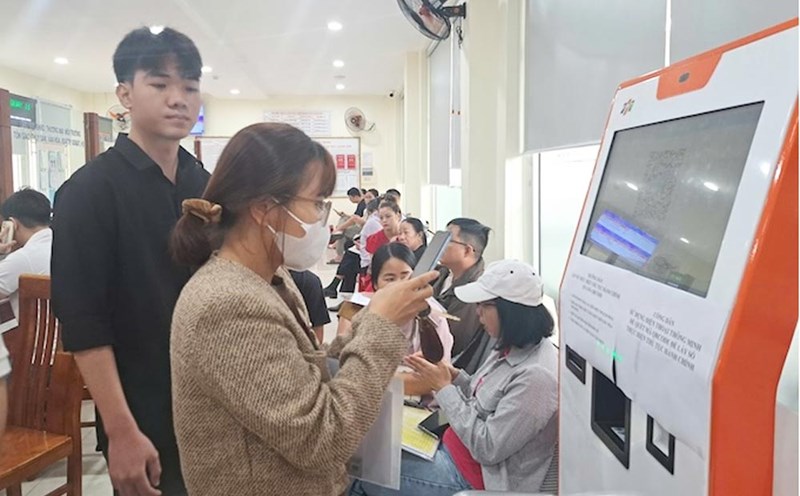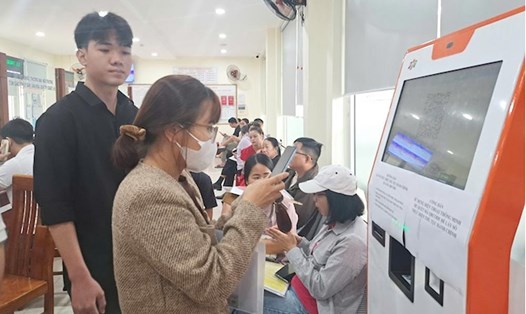Institutionalization to develop science and technology
In the group discussion at the 9th session, the XV National Assembly (took place in the afternoon of 6.5) once again emphasized the importance of the Politburo's Resolution No. 57-NQ/TW on breakthroughs in science and technology development (Science and Technology), innovation innovation (SEA) and national digital transformation. Resolution 57 is considered a guideline, creating a strong motivation for the development of the country in the new period. However, according to the delegates, so that these strategic orientations really come into life, promote the maximum efficiency, fully, specific and timely institutionalization is an urgent requirement, so that the advocate is easy to apply to real life.
When commenting on the project of Science, Technology and Innovation Law, the National Assembly deputies, especially the delegation of Da Nang city, expressed high unity about the need to pass the law project. At the same time, the delegates also set an urgent requirement: The Draft Law must fully institute the viewpoint and orientation of Resolution 57, especially the breakthrough policies on attracting private investment, developing high quality human resources, and promoting science and technology activities in enterprises.
Vivid practices from localities are the measure of policy effectiveness. Da Nang City Party Secretary Nguyen Van Quang pointed out an inherent "bottleneck": investing in infrastructure for science and technology enterprises. He emphasized, "Only with State investment and support can businesses do it. But when investing, the question arises, what mechanism is there for leasing, lending and transferring infrastructure to businesses and scientists to do? ".
This is not a unique concern of Da Nang. Article 56 of the new draft Law stipulates that the State invests, but if it only stops there without a specific, detailed mechanism for exploitation, lease, and operation, then the infrastructure, no matter how modern, will have difficulty promoting efficiency, even causing waste of resources. The proposal to assign the Government to specify the detailed procedures is completely reasonable, in order to avoid the situation where "general" investment is not feasible.
There are lessons from practice
The story of the Software Park No. 2 project in Da Nang is a typical example of how the correct policy can be "stuck" when there is a lack of specific mechanisms and policies.
With the goal of creating the driving force for the development of information technology, following the success of the first software park, Da Nang boldly invested in the No. 2 software park with large scale, expectation to create thousands of jobs. However, after spending nearly 1,400 billion dong from the budget, the project, though basically completed the rough component, has long fallen into the "abandoned" situation due to the entanglement of legal procedures related to the lease of public investment assets from the budget. This is a clear manifestation of "the policy that is difficult to apply".
It was not until February 2024 that the Government issued Decree No. 09 amending and supplementing a number of articles of Decree 144 on specific mechanisms for Da Nang, including regulations on investment, management and exploitation of infrastructure assets of Da Nang Software Park. Then, in October 2024, the Prime Minister issued a decision approving the expansion of the Da Nang Software Park Concentrated Information Technology Park. These moves show the central effort to remove them. However, the long period of the project "standing still" has caused significant losses in development opportunities and investment efficiency.
This shows the importance of comprehensively institutionalizing Resolution 57 right in draft laws. Not only the framework regulations, the law needs to document and cover practical situations, especially the mechanism for management, operation and exploitation of public assets formed from state investment in the field of science, technology and technology. There should be clear regulations on public-private cooperation, flexible and transparent leasing and transfer mechanisms, creating maximum conditions for businesses and scientists to access and effectively use invested infrastructure.
For Resolution 57 to truly create a breakthrough, the development and completion of a synchronous, detailed, and easily applicable legal system is a prerequisite. practical problems from localities and businesses are also the clearest "lessons" for policies issued not only to stop at policies but to truly come into life, unlock all resources, develop science and technology, technology and transform the national digital reality effectively.














